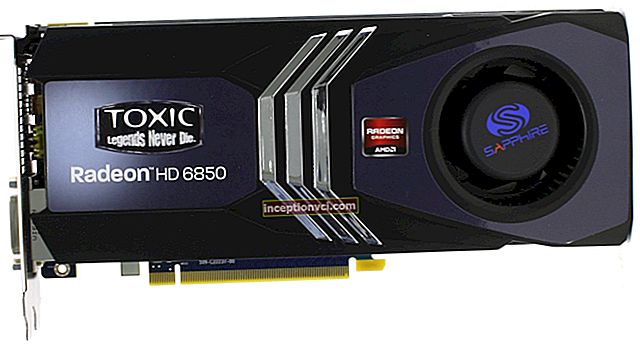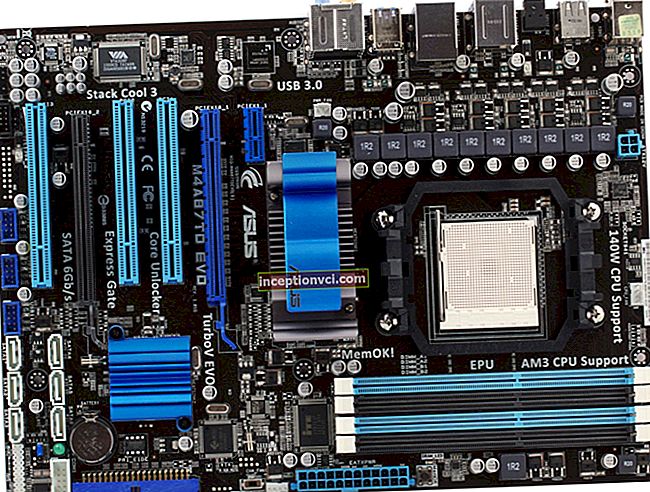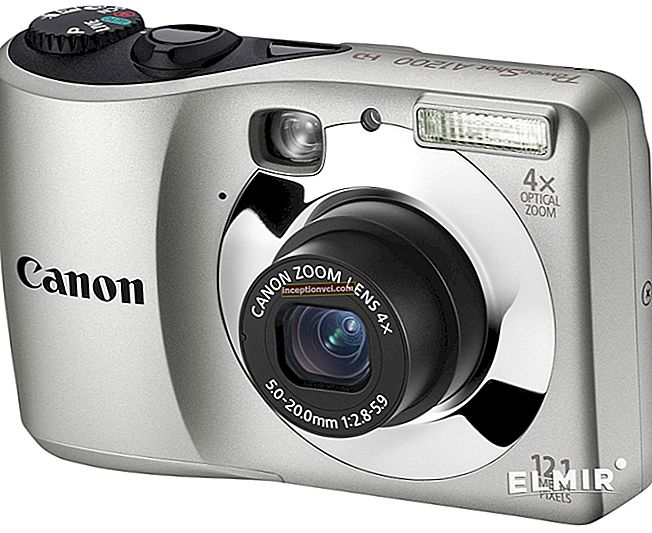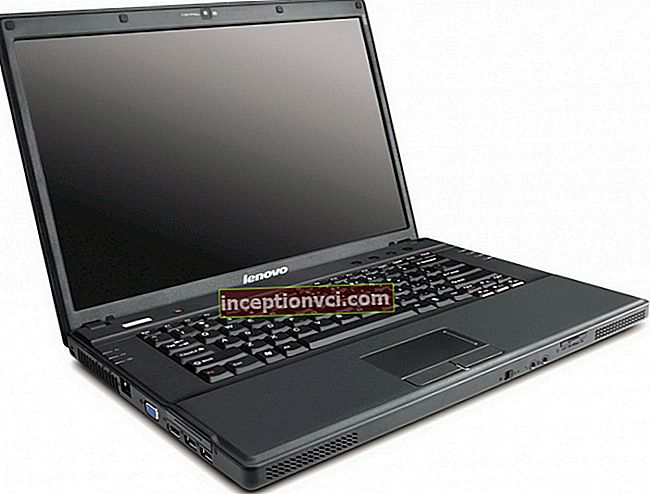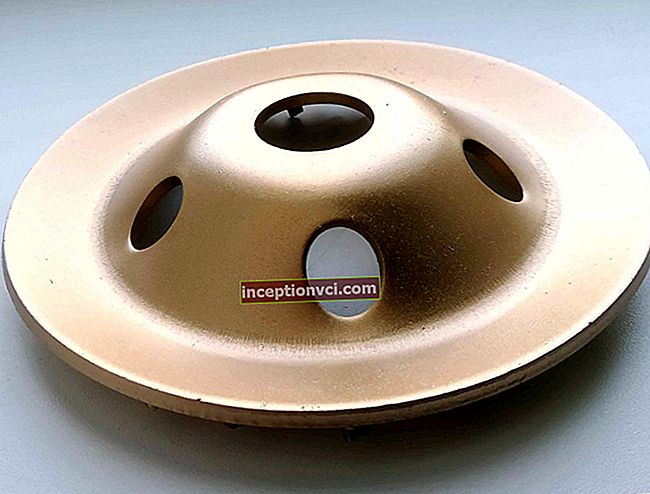Content:
1. Briefly about the main
2. Packaging
3. Equipment
4. Specification
5. Intel Turbo Boost and Intel Core i5-750
6. Cooling and power consumption 7. - Overclocking - Memory controller - QPI bus 8. Outcome 9. Pros and cons 1. Briefly about the main thing: Recently, due to the high system requirements in society, the opinion has been established that for a productive system focused on games, a quad-core processor is required, complete with a top-end video card, and often a pair of video cards. Do not forget that this configuration may not cost you very much. For example, one of the most productive processors from Intel, the Core i7-920 model, cost $ 265 at the time of writing. An inexpensive motherboard based on the Intel X58 Express chipset capable of supporting this processor costs $ 210, and a set of two Kingston DDR3 memory modules with 2Gb memory and clocked at 1333MHz costs $ 66. As a result, you will pay for a basic package of motherboard, processor and RAM as much as a good build of an Intel-based dual-core computer or an AMD-based quad-core computer would cost. Please note that in this case you will also have a top-end video card. So to buy such a powerful device as a processor, you need to weigh the pros and cons. Intel, realizing the situation, released on the basis of the same Nehalem microarchitecture such quad-core processors as: Intel Core i7-860; Intel Core i7-870, Intel Core i5-760 and Intel Core i5-750. The system logic in this case was presented on the basis of the new Intel P55 Express chip, with the help of which manufacturers have the opportunity to create more affordable solutions than on the same Intel X58, which supports Intel Core i7-920. This review will clearly describe to us all the facets of the new technology, we will deal with performance and other aspects of a quad-core processor. We will consider the example of the most affordable Intel Core i5-750 processor. 2. Packing: The processor box is painted in beautiful bluish colors. In the upper right corner, you can see the computer projection of the processor core. And in the center of the box is an embossed Intel Core i5 logo. In the lower right corner there is a reminder that the processor is designed for LGA 1156 sockets. This is done in order to make it clear what kind of motherboard the processor is oriented to and not to get confused, since processors of slightly more expensive models also use LGA 1366 sockets. which in turn gives a wide choice among different motherboards. In the upper part of the package, as has already become a tradition, there is a small window where you can see the heat-distributing cover of the processor. On the side of the box, we can see a sticker-key informing about the main characteristics of the processor. On the back of the box there is a window through which you can see the sticker on the cooling system. Assembling their processors on the 45nm process technology, manufacturers complete the package with a not very strong cooler, which means that standard cooling will barely cope with the temperature that occurs during high-performance operation. 3. Package Contents: Intel is distinguished by the fact that it constantly completes its products with only the most necessary. Inside the box you can find: • Intel Core i5-750 processor; • Cooler E41759-002; • Three-year warranty and quick installation guide; • Sticker on the body. By the way, the sticker has changed its design quite a lot. Now it looks more like the design of the processor box and, just like the box itself, has a holographic projection of a view onto the processor. Cooler E41759-002, as mentioned above, does not provide strong protection against crystal heating. The same fan with a diagonal of 75 mm and a blade profile of 17 mm is used. This cooler, according to Intel itself, is the standard and golden mean for processors based on the LGA 1156 socket. The motor drive is based on technology with PWM support, which in turn gives a wide range of cooler rpm.In operating mode, when working in office programs, the speed of the cooling system reached 2500 rpm, and at maximum load - 3500 rpm. The fan noise was found to be satisfactory. The standard radiator for boxed models is based on a copper base tube, to which the radiator itself, cast from aluminum, is firmly attached. The height of the radiator is 18 mm, and together with the cooler - 33 mm. The heat spreader cover shows the clock speed, which is 2.66 GHz, the cache memory is 8 MB and the PCG 09B power system requirement. B1 encrypted stepping, S-spec alphanumeric code: SLBLC. Do not forget that the core is the same for all Lynnfield technology and, conventionally, all processors on it are equal. The country of origin is also written on the box - Malaysia. The use of the new socket has forced manufacturers to use more pins in LGA 1156 sockets than in older technologies and models. The dimensions and dimensions of the processor have decreased slightly compared to the Intel Core i7-9 * 0 models measuring 42.5x45.0 mm, while the Intel Core i7-8 * 0 and Intel Core i5-7 * 0 have reduced the dimensions to 37. 5x37.5 mm. It should be noted that Socket LGA 775 also had the same dimensions of 37.5x37.5 mm, but they had only up to 775 contacts. 4. Specification: Even the latest version of the CPU-Z program cannot convey the entire entity of the processor. The thing is that the crystal has a lot of innovative solutions and a screenshot from the program can show only data in one instant of time, and the real advantages can be noticed only when working with this processor. We will describe more detailed characteristics a little lower in the course of the text. In this case, it should be noted that the processor operates at a frequency of 2.66 GHz, the voltage supplied in the AUTO mode is 1.232 V, and when the Turbo Boost technology is enabled, it is 1.304 V. The QPI bus frequency operates at 2.4 GHz. ... The presented bus makes the FSB work, but at the same time in the old version of socket 775 it communicated with the north bridge, and the QPI bus communicates directly with the RAM and PCI slots. It is noteworthy that the north bridge on motherboards supporting LGA 1156 does not have a north bridge at all. To understand the above image, you should look at the entire evolution of the LGA 1156 socket. Let's start with the Socket LGA 775 platform, which appeared as a result of the development of Pentium 4 processors. Since it makes no sense to consider the complete evolution, we will begin to understand the still popular and popular Intel P45 chipset. If we look at this diagram of the Intel P45 chipset, we will see that the processor uses the bus to access the North Bridge (MCH). The latter, in turn, communicates with the RAM, the south bridge (ICH) via the DMI bus and one PCI-E x16 v2.0 port or a modification of two PCI-E x8 v2.0 ports. In this case, all the elements are balanced, except for the situation when PCI x16, when two video cards are running, divides the bandwidth by two and gets x8 + x8. Thus, the performance of a particular video card is lost compared to the PCI-E x16 v2.0 port, but it wins slightly when they work together. The latest chipset from Intel for the LGA 775 socket platform is the X48 - the latest and most powerful for such a system build. The main advantage is the presence of two PCI-E x16 v2.0 lanes, which will not degrade their performance, since the bandwidth has increased to 5 GB / s. The revolutionary Nehalem microarchitecture brought with it the latest Intel X58 chipset and Socket LGA 1366 platform, which brought a big step in the development of processor crystals. Now, once and for all, the north bridge has been moved to the processor itself, the latter communicates directly with the RAM. QPI is a new bus that communicates with the north bridge. The bandwidth of this technology is 25.6 GB / s, which is twice the result of the Socket LGA 775 platform technology. The North Bridge can easily communicate with two PCI x16 v2.0 via the DMI bus.Such states of affairs allow using fully two video cards without sacrificing performance, at least up to 10 disk drives, a powerful sound system and up to two network cards. It is not difficult to guess that such technologies are not the cheapest. Therefore, a set of a processor and a motherboard suitable for it with the latest logic will cost the buyer about $ 500. More recently, Intel announced and released a "cheaper" version of Nehalem technology based on Socket LGA 1156 with Intel P55 Express, Intel H55 Express and Intel H57 Express chipsets. The fact that the chipset does not show "space performance" is not important, the main thing that immediately catches the eye is the absence of the north bridge. In Socket LGA 1366, the north bridge did not play a particularly big role, but transferring it completely to the processor was a truly bold and revolutionary step forward. Now the crystal communicates with the video card and RAM without intermediaries, which will have a beneficial effect on the performance of the system as a whole. However, since the processor was released under the motto "Nehalem to the masses", there are some shortcomings and simplifications in comparison with its "big brother". Firstly, the latest technology has lost one channel and works as a two-channel one, like on older versions of LGA 775 sockets. But otherwise everything remained in place: performance and frequencies did not drop compared to i7. Secondly, the number of PCI lanes has returned to 16 and now the technology seems to have returned to the past in the era of the Intel P45 chipset. This, I repeat, suggests that a technology is used in which two video cards work on the x8 + x8 principle. Generally speaking, I propose to buy a north bridge along with the processor itself, but the performance we get in return cannot be compared with anything. The Caches tab showed us that the cache architecture remained at the same level across all the comparison models presented. To, so to speak, summarize all of the above, we offer you a table in which the brightest representatives of all the technologies under consideration are presented. Intel Turbo Boost Technology is a breakthrough because the version of the technology that was implemented in the Intel Core i7-9 * 0 line looks frivolous compared to the latest processors in the Intel Core i7-8 * 0 and Intel Core i5-7 * 0 lines. ... Recall that this technology increased the multiplier by one, which gave an increase of 133 MHz. The technology works like this: When the processor is performing a single threaded task, its multiplier rises from 20 to 24, which gives an increase of 540 MHz. This is called legalized crackdown! For older games that use older engines that only support one processor, this will be a real boon. Further, the manufacturers decided that one core is a tribute to the past and decided that support for two cores is still very relevant. Therefore, Turbo Boost increases the multiplier from 20 to 24 in this case as well. This allows you to work with a frequency of 3.2 GHz but already on two cores. This is an impressive result. 5.Intel Turbo Boost and Intel Core i5-750 Initially, for testing the laptop, Intel Turbo Boost technology was disabled and all cores were tested separately by the CPUID TMonitor program. The processor, regardless of the load, remained at the same x20 multiplier, but this is not true and the program is slightly mistaken. The Enhanced Halt State energy saving technology in idle reduced the clock frequency to 1.2 MHz, which was shown to us by the CPUID TMonitor program. Further, for tests, we disabled three cores in the BIOS and enabled Intel Turbo Boost technology. Simply put, we've turned a quad-core processor into a single-core processor. 3.2 GHz - the frequency at which the processor worked, despite the complexity of the task, from the beginning of the test to its end. When we switched the processor to dual-core mode, we saw the same situation as the first time: both processors were running at 3200 MHz. The Fritz Chess Benchmark program was used as a test package. Further, the processor received complete freedom, since all four cores were included. Fritz Chess Benchmark tested the processor on a single threaded task.The crystal showed an excellent result: it not only coped well with its task, but also transferred the task to different processors, increasing the multiplier to x21. We decided to verify the quality of the previous result. This time we took the Super Pi program and tested the processor in it. The result was confirmed, Intel Turbo Boost switched the process from the loaded core to the free one without loading the system with it. For the third time, the processor was loaded with a shell from the Lame Explorer codec. And for the third time the processor has proved to us its "loyalty". It stably processed packets of information at a frequency of 2.8 GHz. No matter how much we would like to praise the processor, no matter how much it pleases us with its performance, there was a fly in the ointment in the ointment. 6. Cooling and power consumption One of the important components of the processor and the entire system is power consumption and heat dissipation. It was interesting for us to test the device for these indicators in operating mode and under load. The declared heat dissipation is 95 W, but it comes with a very modest cooler. For the test, we used the Intel Core i5-750 processor itself, the cooling supplied with the crystal and the ASUS Maximus III Formula motherboard. Power consumption is 165 W. At peak load, it seemed to be a small value. But it was so. Since the north bridge has moved into the processor, the chipset takes only 5 watts of power consumption. In addition, a highly economical DDR3 RAM is used. If we subtract the total power consumption from all other components, it turns out that the processor takes most of it. Secondly, when we installed a boxed cooler, we found out that the processor was heated up, which easily surpassed the declared operating maximum of 72 degrees even with Intel Turbo Boost technology disabled and in a well-ventilated case with a pair of 120mm coolers. As it turned out, it was that "fly in the ointment". To be sure of the data, we used other motherboards from other manufacturers and found a small variation in the voltage supplied to the processor. But all this did not in any way positively affect the cooling of the device. To summarize: the cooler supplied with the processor is in no way suitable for the normal operation of the device, which leaves some doubts about the manufacturer's choice of the solution to complete the cooling with these processors. On our own behalf, we can recommend using the Cooler Master Hyper 212 Plus cooling, which does not allow the overclocked processor to heat up at a peak load of up to 55 degrees Celsius. 7. Testing When testing this processor, the following configuration was used: The following processors were also used for the test: Unfortunately, we were not able to observe any surprising results, the tests gave preference to one or the other processors. The AMD Phenom II X4 955 has suffered a complete setback, although it has 3.2 GHz and 8MB of cache on board, just like the Nehalem-based processors. In gaming tests, we were able to get a clearer picture. Games such as Word in Conflict, as well as Far Cray 2 and the arcade simulator Race Driver: GRID have chosen the crystals of the Nehalem architecture. The not new Intel Core 2 Quad Q9550 did not show good results, although its cost is higher than that of Intel Core i5-750. To our surprise, the Tom Clancy`s H.A.W.X. demo preferred AMD Phenom II X4 955, as well as Core 2 Quad Q9550 from Intel. According to this game, our top three leaders on the Nehalem architecture are not powerful enough for it. This, most likely, was in the clock speed of the processors. If you decide to take a high-performance package, then we advise you to stay on the LGA1156 platform and the Intel Core i5-750 processor, since they compete with the older LGA775 solutions and the younger LGA1366 solutions. Intel Turbo Boost Our benchmark results were not entirely satisfying, so we decided to test Intel Turbo Boost technology and test its effect on system performance. It's strange that the performance gain was only up to 2.4%, but, however, the technology did not increase power consumption. This feature requires strictly single-threaded or dual-threaded tasks. It was extremely difficult to achieve the result in the test mode, but still we noticed that the performance gain of the programs increased from 1 to 6 percent. Overclocking We were able to overclock the processor that came to us to 4209 MHz with a power supply of 1.440 V, which was a 58% increase in consumption in comparison with the standard factory settings. Subsequent overclocking was not possible due to system instability: the operating system started, but the programs were already working with errors. For the LGA 775 platform, such a result would be a record. The resulting increase in the programs was 38%, which, in comparison with the models of the i7 line, is not 20% on average. The indicator of the tested processor can be safely called high. By the way, processors Intel Core 2 Quad Q9550, as well as AMD Phenom II X4 955 were able to accelerate only 17% and 14%, respectively. As we can see, the potential of Intel Core i5-750 is limitless and it can be safely overclocked to reasonable limits. Memory controller Improvements in processor architecture have contributed to the upgrade of memory controller technology. We used all four RAM slots like the one used in testing. The timings and frequency did not change their readings, however, the Command Rate, which shows the controller's latency when executing tasks, changed its indicator from 1T to 2T. On testing further, we see the following changes: Performance fell by 1%, which is not much in office and undemanding programs, but for modern games with their overestimated needs, this drop can be significant. We would like to advise you: when buying a processor, take two identical two-gigabyte RAM strips at once. As the tests show, it is pointless to take less than three gigabytes. And just to activate the Dual Channel function, you need exactly the same memory bars, clock frequency and, preferably, the manufacturer. Buying one bar first, and then after a while another one and, as is often the case, with different characteristics in contrast to the first is an absurd exercise. Especially for you, we deactivated the Dual Channel mode, and installed the memory modules themselves in only one channel. We observe a drop in performance: On average, the drop was about four and a half percent, which is not a significant difference, but in some applications this threshold was significantly exceeded. The conclusion follows: as in previous tests, we see that saving on memory has a detrimental effect on the speed of your computer. If you nevertheless decided to assemble a system based on Socket LGA 1156, then try not to skimp on components. Next, we forcibly slowed down the memory in order to show what kind of performance drop will occur if you nevertheless decide for some reason to buy a cheaper DDR3-800. The indicators are as follows: The average drop turned out to be close to the result of 4%, which is even less when the Dual Channel mode is turned off. However, if you use applications that require high memory performance, then the increase will be about 23-25%. This means that it will be possible to save a little on the memory frequency, but we do not think this is the best solution. QPI bus. Performance and bandwidth. We would also like to test the performance of the fast QPI bus, which combines the processor cores, as well as the memory controller with a PCI-E controller. We deliberately slowed it down from 2400 MHz to 2133 MHz, which is about 12% performance loss. All results in the image below: The fall was only 1%, which is a small loss. We can say that the processor has inherited a high-performance bus from the "older brothers" of the i7 series. 8. Summary As a result, we will say that at last Intel has assembled a truly productive and inexpensive processor for us, worthy of competing on equal terms with its counterparts.Intel Core i5-750 is notable for the fact that it uses Intel Turbo Boost technology, which allows you to safely increase the performance of your system by as much as 540 MHz. It should be borne in mind that a motherboard serving this processor costs only $ 100. Thus, it is quite possible to assemble a system cheaper even than on Socket LGA 775 with a corresponding processor. Intel Core i5-750 with its flexible performance makes it possible to assemble a powerful gaming configuration. 9. Pros and cons + Price = Quality + High performance + The best option for building gaming computers + High overclocking potential + Intel Turbo Boost - 






































